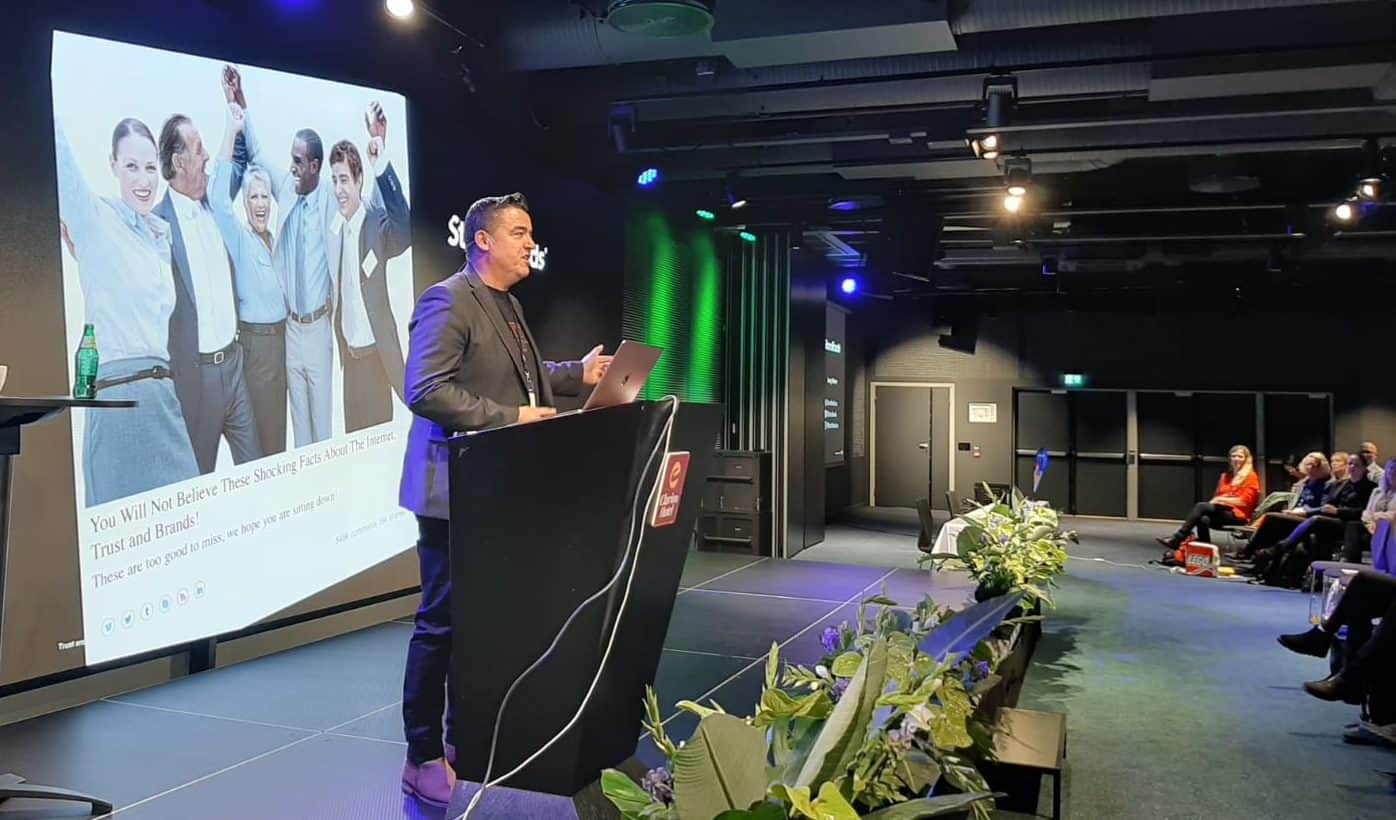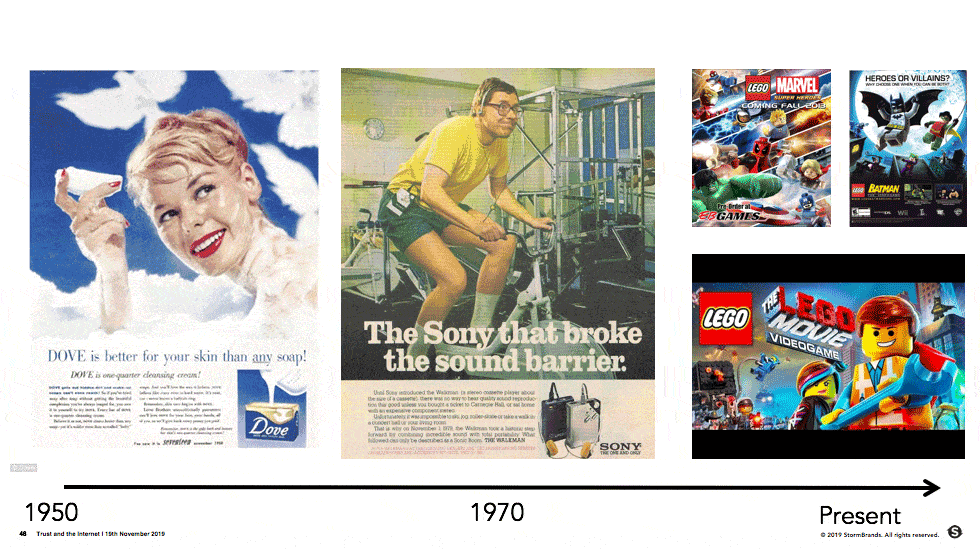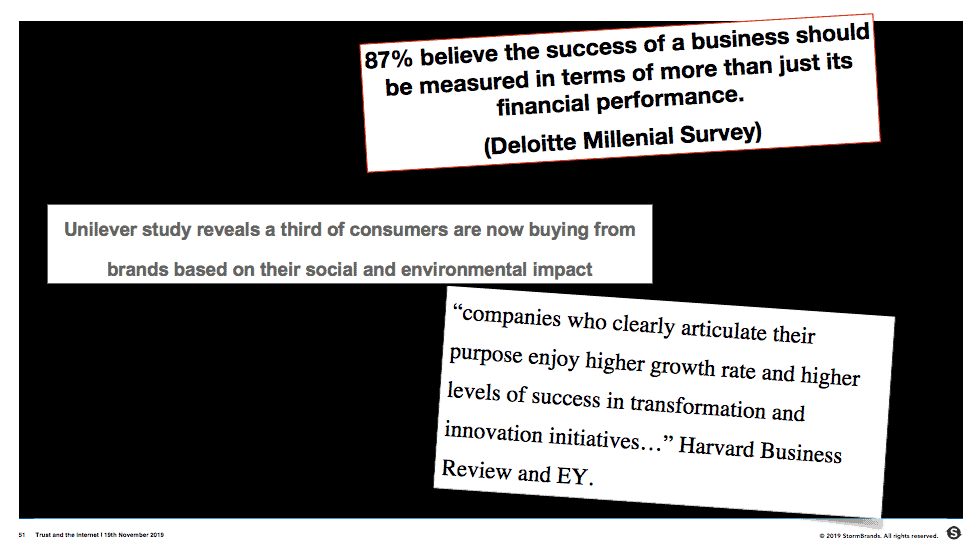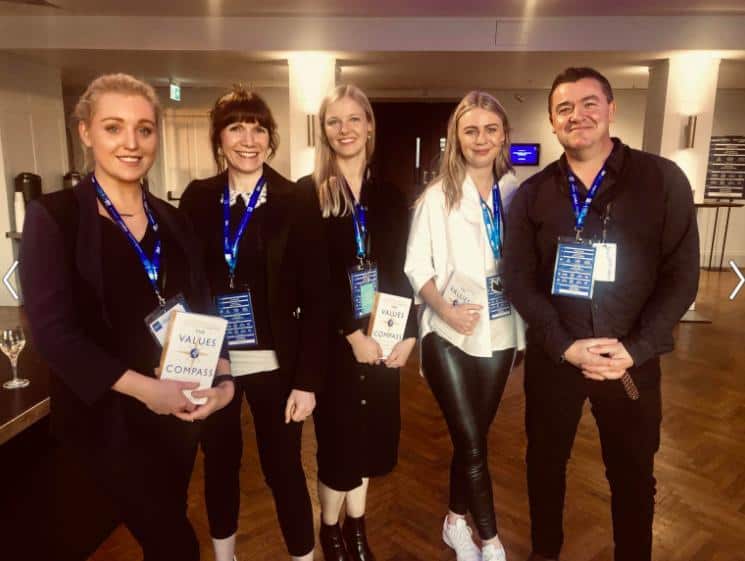Brands + Trust
5-minute read
“Do you trust me? Please sit down if you don’t.”
Our MD Jonny Westcar posed this question to an audience of 200 strangers meeting him for the first time. They’d been asked to stand up moments before. Half of the audience sat down in response.
This was the National Internet Forum 2019, held in Oslo last week. It featured 200 representatives from public and private organisations in Norway. The representatives were as varied as the Norwegian government, the National Library of Norway, to Telenor; one of the largest telecoms companies in the world. The event featured a variety of speakers from across the government, commercial, regulatory and academic spectrums.
What did we all have in common?
What brought all the attendees together was the feeling that trust in the internet is in crisis, a timely theme given founder of the World Wide Web, Tim Berners-Lee’s recent launch of the ‘Contract for the Web‘. Many of the forum’s presentations centred around data sharing and the changing nature of information gathering, but ours focused on something a little different. The role of brands in creating trust.

“Jonny Westcar talks all things trust”
Our opening question aimed to provoke reflection upon the concept of trust.
A Dutch proverb muses that ‘trust comes on foot and leaves on horseback.’ At STORMBRANDS, we prefer ‘arrives on a snail, leaves on a horse’ but the meaning’s the same. This metaphor neatly illustrates that trust can be slow to arrive yet volatile and quick to depart. It alludes to how a single mistake can undo years of building trust.
Trust is considered yet instinctive, rational yet emotional. There is no doubt that building trust is incremental, but the loss of it is binary. Trust has been with us since the dawn of humanity.
To earn it? Well, it’s a deceivingly simple concept.
Start with being honest, people trust you when you tell the truth. Act as you say, deliver what you promise, and do no harm.
But where are we now? The last decade has seen trust in institutions fall to an all-time low and industries have been outed for failing to self-regulate. Think banking and social media.
Faced with increasing forces of change, many industries have struggled to balance competitive pressures with the need for transparency, leading to the erosion of trust. Tech has innovated rapidly – as a force that is disruptive yet connective. The technological advancements we enjoy today – courtesy of the internet – bring with them a breadth of both positive and negative possibilities.
The emergence of ‘fake news’ has normalised lying.
It extends this erosion of trust to our representatives and political institutions. The media lead on ‘fact-checking’ our politicians rhetoric yet are often guilty of presenting opinion as fact themselves.
For brands in this world today, trust is the most important strategic asset available.
The concept of the brand itself was historically (and often is still) viewed as an element held within an organisation’s marketing or communications silos. It was often reduced to event banners, branded merchandise, website updates etc. A cost centre, not a value creator.
The world has changed.
Today brand is a strategic tool that drives and integrates organisational culture, customer experience and value creation.
At the emergence of consumerism, brands initially acted as simple signposts of differentiation, through to the 70’s & 80’s where innovation boomed creating new products and markets (think Sony’s Walkman for example), to today where brands build always-on, consumer-centric experiences. Think Lego – who nearly went out of business in 2004, before switching its strategy to licensing entertainment products, such as games and movies – establishing itself as one of the world’s most valuable, and universally recognisable entertainment brands. Today winning brands deliver an experience as much as a service or product.

We have now become used to an increasingly always-on, hyper-connected world. A world in which we can – and expect to – interact with brands in any medium we like. We have come to anticipate immediate and personalised service. The model and our expectations are constantly evolving.
This is reflected in the growth of intangible value too.
If trust drives brands, it also drives the creation of intangible value too. In the 1970s intangible assets (including brand value as a key element) were estimated to be worth around 17% of an organisations value in the S&P index, up to 80% today. In 2013, the UK Government estimated it at 70 – 80%.

For organisations to build and sustain the trust needed to create value in brands there are critical formative steps; Start inside, start with leadership and start with why.
It is not reasonable to expect to build trust outside of an organisation if your people are not in a culture that creates and nurtures trust within it. The values that normalise behaviour within companies are most often set by leaders, even in today’s flat and matrix driven structures, those that are seen to be accountable and those that are seen to create success are the ones that influence ‘the way things are around here’ the most. Trust must be created in leadership first and foremost.
From the outside also, transparency in the base motivation of brands is essential for trust to be created.
The concept of brand purpose is the answer to the question: Why does the organisation exist? and is the first question to answer. It is increasingly and actively sought out today.
The communication of brand purpose is essential in enabling trust, as it clarifies both the organisation’s ambition and scope, and today the promises and behaviours of brands are observed, scrutinised and shared in a heartbeat. Brand sentiment is influenced at the speed of your internet connection.
If trust is broken, can it be restored? Yes, we think it can, although it takes time and effort and communications only takes you so far, leadership is essential and can accelerate or undermine the process (as perhaps Mark Zuckerberg found out). To all intents and purposes, you find yourself ‘back on the snail’.
Sign up to our mailing list in the footer to receive more insights straight into your inbox, or follow us on Instagram or LinkedIn.






